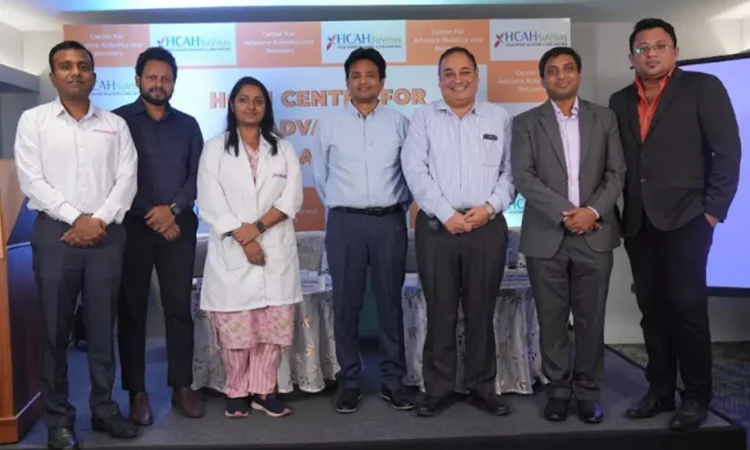Over 50 prominent neurologists, neurosurgeons, and rehabilitation specialists convened in Hyderabad for a scientific session focused on a crucial yet often overlooked aspect of healthcare — post-stroke rehabilitation. The panel reached a consensus that India needs to incorporate advanced robotic rehabilitation into its post-stroke care framework to facilitate the quickest and most cost-effective recovery for patients. The session, titled ‘Advance Robotics in Rehab & Recovery,’ highlighted a significant gap in India’s healthcare — the absence of structured rehabilitation after acute treatment concludes. Stroke remains a leading cause of adult disability in the nation, yet for many patients, medical intervention ceases upon hospital discharge. Experts noted that the true challenge for recovery begins at this point. Dr.
BSV Raju, Senior Consultant Neuro Surgeon at Yashoda Hospital, remarked, “India’s healthcare system excels in emergency care, but rehabilitation is where lives are genuinely rebuilt. In stroke cases, every day is crucial. The sooner a patient begins guided rehabilitation, the greater the likelihood of regaining movement, balance, and independence. Robotic rehabilitation introduces precision and intensity into therapy, facilitating thousands of targeted repetitions that enhance neuroplasticity — the brain’s ability to rewire itself. This is how the fastest recovery occurs.” Rehabilitation, experts asserted, remains the “missing link” in India’s healthcare. Hospitals may save lives, but recovery centers are essential for restoring patients. Unfortunately, many patients are discharged home without professional guidance, which delays recovery and increases dependency.
Numerous families are unaware that rehabilitation is essential — it is the critical phase that determines whether a stroke survivor returns to a normal life or faces lifelong disability. Dr. Gaurav Thukral, Co-Founder & President of HCAH, stated, “We recently launched Telangana’s most advanced robotic rehabilitation lab, featuring AI-powered exoskeletons and motion-tracking systems. These innovations enhance therapists’ capacity to deliver precise, measurable care. Patients can initiate rehabilitation sooner, recover more swiftly, and monitor tangible progress through data. Rehabilitation is no longer about waiting — it’s about activating recovery.” He further explained, “Early and structured rehabilitation is not only clinically effective but also economically prudent.
Patients who begin therapy promptly tend to recover quicker, which reduces hospital readmissions, minimizes caregiver fatigue, and lowers long-term costs. Investing in rehabilitation ultimately represents savings over time.” Experts concurred that India’s next healthcare advancement will derive not from increased surgeries, but from improved recovery pathways. “Surgery saves lives; rehabilitation restores them. We must make post-stroke rehab a fundamental component of care rather than an afterthought,” Dr. Thukral added. The discussion also addressed systemic challenges — limited insurance coverage, a shortage of trained physiatrists and therapists, and the exclusion of Physical Medicine & Rehabilitation (PMR) from medical training. These issues, experts noted, hinder India’s ability to cultivate a culture of recovery.
Participants urged policy changes to incorporate rehabilitation into insurance plans, hospital discharge procedures, and public health messaging. They stressed that recovery centers should serve as extensions of hospitals, ensuring that every patient transitions smoothly from survival to functionality. The event concluded with a collective commitment from attendees to enhance awareness regarding the role of technology in rehabilitation. The unified message was clear — the future of healthcare hinges not just on saving lives but on restoring them. And the fastest, most affordable recovery post-stroke begins with rehabilitation.
